Utah Birds, Utah Birding, and Utah Birders. Promoting the sharing of information, and the conservation of habitat for birds in Utah and elsewhere. We are a group of people who want to share what we know, and create a positive birding experience in Utah.
BIRDERS BLOG
a blog by and for Utah Birders
Introducing the 2014 Utah Birders Sticker
posted by Tim Avery at
8:15 AM
on Tuesday, January 28, 2014
Being a new year we decided to launch a new Utah Birders Bumper car decal/sticker. When we came up with the Steller's Jay as our original bird for the Utah Birders we did so because it was simply put, one bad a$$ bird. It wasn't a dainty little thing with some pink marking--like the Black Rosy-Finch, which was my first choice (I know, I know...). Anyways, we've now had 6 different stickers over the past 2 years--3 for specialty trips we've led, and 2 different versions of the Jay. The all new 2014 Utah Birders Sticker however came about from our recent poll conducted by Matt Pendleton--this years sticker was the #1 bird most representative of Utah based off the Top 10 Poll--the 2014 sticker boast the WESTERN TANAGER!
So you may be wondering--how can I get my hands on one of these bad boys? Easy enough question to answer. For starters, if you sign up for the 2014 Utah Birders Challenge, we will mail you one. Then throw that thing on the back of your car so we know you're out to find the coolest and some of the most hard to find bird in Utah.
We will also periodically hand them out at field trips, and as giveaways throughout the year. And if you haven't created a Utah Birders Profile yet, you can also get one by doing that! If you have created a profile recently and don't have you're sticker yet, this is the one you will get!
We'll still have other stickers at various events specific to that event, but we wanted to have something new and fresh for everyone for 2014!
So you may be wondering--how can I get my hands on one of these bad boys? Easy enough question to answer. For starters, if you sign up for the 2014 Utah Birders Challenge, we will mail you one. Then throw that thing on the back of your car so we know you're out to find the coolest and some of the most hard to find bird in Utah.
We will also periodically hand them out at field trips, and as giveaways throughout the year. And if you haven't created a Utah Birders Profile yet, you can also get one by doing that! If you have created a profile recently and don't have you're sticker yet, this is the one you will get!
We'll still have other stickers at various events specific to that event, but we wanted to have something new and fresh for everyone for 2014!
The 2014 Utah Birders Challenge
posted by Tim Avery at
12:59 PM
on Monday, January 27, 2014
READY... SET... GO...
This years challenge is easier than last years, but can also be quite a bit harder--this year we are sending you on a birding scavenger hunt to try and find and/or photograph some of the most unique, rare, representative, and down right hard birds to find. It will be a monumental challenge to snag all 100 species on the list--and to photograph them will be even trickier. This year photos are not required--you can just hear or see the species to count it, but if you get a photo, it's worth double points.
The challenge includes 96 species on a sliding scale of 1 to 5 for how hard they should be to get--the harder the find, the more valuable the species. There are 4 bonus birds/photos that are worth more points and are a bit more of a challenge. Finally there are 16 additional scavenger hunt items that can be picked up for bonus points. Some are birds, some are people, some are events, and some have the possibility for multiple photos and points.
To participate you'll need to sign up below so we can give you a spreadsheet to keep track of your points. If you are going to take photos, you will need to create a new Flickr Set in your account called, 2014 Utah Birders Scavenger Hunt, and tag all photos with "utah birders", and add your pictures to the Utah Birders Flickr Pool Group.
The contest is open until December 31, 2014--you may use photos taken in January (before we announced the challenge)... The only rules are that all sightings and photos must happen in Utah. Once you've signed up we will send you the official checklist and tracking sheet to keep track of your scavenger hunt for the year.
This years challenge is easier than last years, but can also be quite a bit harder--this year we are sending you on a birding scavenger hunt to try and find and/or photograph some of the most unique, rare, representative, and down right hard birds to find. It will be a monumental challenge to snag all 100 species on the list--and to photograph them will be even trickier. This year photos are not required--you can just hear or see the species to count it, but if you get a photo, it's worth double points.
Are you up to the challenge?
The challenge includes 96 species on a sliding scale of 1 to 5 for how hard they should be to get--the harder the find, the more valuable the species. There are 4 bonus birds/photos that are worth more points and are a bit more of a challenge. Finally there are 16 additional scavenger hunt items that can be picked up for bonus points. Some are birds, some are people, some are events, and some have the possibility for multiple photos and points.
Spreadsheet to track your sightings!
To participate you'll need to sign up below so we can give you a spreadsheet to keep track of your points. If you are going to take photos, you will need to create a new Flickr Set in your account called, 2014 Utah Birders Scavenger Hunt, and tag all photos with "utah birders", and add your pictures to the Utah Birders Flickr Pool Group.
Utah Birders Flickr Pool
The contest is open until December 31, 2014--you may use photos taken in January (before we announced the challenge)... The only rules are that all sightings and photos must happen in Utah. Once you've signed up we will send you the official checklist and tracking sheet to keep track of your scavenger hunt for the year.
Labels: 2014, big year, challenge, contest, listing, photography
2013 Utah Birder Photo Big Year Recap
posted by Utah Birders at
11:00 PM
on Sunday, January 26, 2014
The year came, it happened, and now it's in the past. And 5 Utah Birders stood up to the challenge and did a Photo Big Year! Big Ups to the 5 who took part in this very unofficial, and friendly game of "photo the birds of Utah". The rules were simple--find and photograph as many birds in Utah in 2013 as you can. And so it happened. Below are a few pictures, and words from the those who took part!
This was a fun challenge as I've never photographed birds in Utah, let alone kept an annual count. I enjoyed the photos mostly for showcasing the variety of birds in Utah, but also as a useful tool for identifying purposes. PLEASE let me know if any of these are misidentified!
Thanks to everyone who posted on Ubird and eBird, and thanks to anyone that helped located, identify, and email/respond to inquiries. Also a special thanks to Uncle Bill for the awesome photography equipment.
Birds I didn't get pictures of: American Crow, American Tree Sparrow, Barrow's Goldeneye (lost the pic), Black-billed Magpie (seriously!), Brown Creeper, California Quail, Horned Grebe (lost the pic), Marsh Wren, Red-breasted Merganser (lost the pic), Sage Trasher (lost the pic), Turkey Vulture (seriously!)
Tough identifications for me (please offer opinions or misidentified images) - Terns: Common vs. Forester's; Flycatchers: Gray, Hammond's, Dusky, etc.: Yellowlegs: Greater vs. Lesser (especially at a distance); and Thrushs: Hermit vs. Swainson's.
So where to start... I was gung-ho from day 1--I knew I would photograph over 300 species this year, and maybe, just maybe take a shot at my previous photo big year record of 332. I was off to a really good start bird # and photo wise--but then this summer I just hit a brick wall and came to a halt-- after the first week of June, I didn't really go birding much the rest of the summer, and took next to no pictures--then I was gone for an entire month during migration--and once I got back was bed ridden for about 5 weeks--then it was November and too late for a lot of birds. The year came to a close and I had barely scratched past 250 photos.
Oops. I already know that quite a few people did better than me, and I think that's awesome! I guess I will have to wait and try this again when I know I wont be doing any heavy traveling for a year and can really get after the specialty birds, and be here for the entire fall. Can't wait for the 2014 challenge--its a doosey!
I must add that I too enjoyed the challenge that Tim put out there for us to try and photograph all the species we could for the year 2013. I was able to compile a total of 266 photos and a observation list of 286 for the year. Trying to lug my 600mmm lens around everywhere I went birding made for an additional challenge but still was fun. There were several species that were seen by others and reported that I was unable to locate after many tries, but which I hope I can observe this year
I loved this challenge because by the end of 2012 I had all but given up taking photos. I am glad that I started again because now I have a whole collection of photos--mostly terrible--that remind me of the good times and good birds I saw over the year. Seeing a Blue Jay in my very own neighborhood was probably one of the most exciting things of the year, so I chose that as my favorite photo. But probably my highlight of the year was the day I took my first-ever trip up to Kolob Reservoir. My best-yet views of Lewis's Woodpeckers, lifer Acorn Woodpeckers, lifer Pygmy Nuthatches, lifer Grace's Warbler. Also a first that day was finding Grafton and getting lifer Scott's Oriole and Black-chinned Sparrows. And getting bit by painfully venomous Harvester Ants and having to strip down to my britches and shake out my pants and treat my wounds. Luckily Grafton is a ghost town. Despite the pain and welts that lasted for weeks, the amazing birding made up for it, and plus I have a fun story to tell. (One that my friends are probably tired of hearing.) All in all, 2012 was a great year, I learned a ton about Utah and the birds that live in and visit our state!
It was fun visiting many new areas of Utah in 2013. I got to see 43 new Utah birds in habitats ranging from above treeline to the Mojave Desert. 10 of those species were lifers for me as well. Utah birding is the best.
• • •
Wilson's Snipe by Nate Brown
Nate Brown
This was a fun challenge as I've never photographed birds in Utah, let alone kept an annual count. I enjoyed the photos mostly for showcasing the variety of birds in Utah, but also as a useful tool for identifying purposes. PLEASE let me know if any of these are misidentified!
Thanks to everyone who posted on Ubird and eBird, and thanks to anyone that helped located, identify, and email/respond to inquiries. Also a special thanks to Uncle Bill for the awesome photography equipment.
Birds I didn't get pictures of: American Crow, American Tree Sparrow, Barrow's Goldeneye (lost the pic), Black-billed Magpie (seriously!), Brown Creeper, California Quail, Horned Grebe (lost the pic), Marsh Wren, Red-breasted Merganser (lost the pic), Sage Trasher (lost the pic), Turkey Vulture (seriously!)
Tough identifications for me (please offer opinions or misidentified images) - Terns: Common vs. Forester's; Flycatchers: Gray, Hammond's, Dusky, etc.: Yellowlegs: Greater vs. Lesser (especially at a distance); and Thrushs: Hermit vs. Swainson's.
• • •
Red Crossbill by Tim Avery
Tim Avery
So where to start... I was gung-ho from day 1--I knew I would photograph over 300 species this year, and maybe, just maybe take a shot at my previous photo big year record of 332. I was off to a really good start bird # and photo wise--but then this summer I just hit a brick wall and came to a halt-- after the first week of June, I didn't really go birding much the rest of the summer, and took next to no pictures--then I was gone for an entire month during migration--and once I got back was bed ridden for about 5 weeks--then it was November and too late for a lot of birds. The year came to a close and I had barely scratched past 250 photos.
Oops. I already know that quite a few people did better than me, and I think that's awesome! I guess I will have to wait and try this again when I know I wont be doing any heavy traveling for a year and can really get after the specialty birds, and be here for the entire fall. Can't wait for the 2014 challenge--its a doosey!
• • •
Western Screech-Owl by Dickson Smith
Dickson Smith
I must add that I too enjoyed the challenge that Tim put out there for us to try and photograph all the species we could for the year 2013. I was able to compile a total of 266 photos and a observation list of 286 for the year. Trying to lug my 600mmm lens around everywhere I went birding made for an additional challenge but still was fun. There were several species that were seen by others and reported that I was unable to locate after many tries, but which I hope I can observe this year
• • •
Blue Jay by Stephanie Greenwood
Stephanie Greenwood
I loved this challenge because by the end of 2012 I had all but given up taking photos. I am glad that I started again because now I have a whole collection of photos--mostly terrible--that remind me of the good times and good birds I saw over the year. Seeing a Blue Jay in my very own neighborhood was probably one of the most exciting things of the year, so I chose that as my favorite photo. But probably my highlight of the year was the day I took my first-ever trip up to Kolob Reservoir. My best-yet views of Lewis's Woodpeckers, lifer Acorn Woodpeckers, lifer Pygmy Nuthatches, lifer Grace's Warbler. Also a first that day was finding Grafton and getting lifer Scott's Oriole and Black-chinned Sparrows. And getting bit by painfully venomous Harvester Ants and having to strip down to my britches and shake out my pants and treat my wounds. Luckily Grafton is a ghost town. Despite the pain and welts that lasted for weeks, the amazing birding made up for it, and plus I have a fun story to tell. (One that my friends are probably tired of hearing.) All in all, 2012 was a great year, I learned a ton about Utah and the birds that live in and visit our state!
• • •
Little Gull by Kenny Frisch
Kenny Frisch
It was fun visiting many new areas of Utah in 2013. I got to see 43 new Utah birds in habitats ranging from above treeline to the Mojave Desert. 10 of those species were lifers for me as well. Utah birding is the best.
• • •
The were no losers in 2013, only winners--those who took part are all winners for going out and tackling something differen this year!
So congrats to the 5; and Kenny well done tracking down and photographing 315 species this past year--that's a very impressive feat!
Labels: 2013, big year, challenge, contest, listing, photography
Flat Tires and Rare Orioles
posted by Tim Avery at
1:52 PM
on Saturday, January 25, 2014
As I stared at the spare tire under my pickup, laying in the dirt in the middle of the Joshua Tree lined road leading to our campsite on the Beaver Dam Slope , I really was regretting the decision to return to this camp. Kenny shined the flashlight on wheel as I tried to figure out how to get the tire off the lowering bracket. It was pitch black, starting to get cold, and we were less than a ¼ mile from the inconspicuous pull off where we would throw our sleeping bags on the ground for the night. I hadn’t yet decided if this was just my bad luck, or the price for the good luck we had birding.
27 hours earlier…
We had left Salt Lake around lunch time on Friday the 17th to get to St. George with about 90 minutes of light left to look for the bird. The trip down went quickly and before we knew it we were parked just off Green Springs Drive looking for Utah’s 1st ever STREAK-BACKED ORIOLE. Kenny Frisch and I had waited a couple weeks since the bird had started being reported regularly--and luckily it had been seen that morning. We had high hopes. Spending the following hour and half wandering up and down the streets, scanning the trees, bushes, and birds we began to wonder if there had been an accident. The flyover SHARP-SHINNED and RED-TAILED HAWKS didn’t alleviate those feelings. Keeli Marvel was looking as well but even with 3 set of eyes there was no oriole.
As we left Merrill Webb and his wife arrived finding they had the right area--we talked about returning the next morning, when hopefully our luck would have turned. Kenny and I headed off towards the Beaver Dam Slope as darkness fell over Washington County. By the time we turned off the truck it was 20 degrees cooler than when we were looking for the oriole, and you couldn’t see 10’ in front of you in the dark. Being early I threw The Big Year on my iPad and we watched how ridiculous birders are before finally calling it a night. Sometime in the middle of the night a GREAT HORNED OWL started calling from one of the trees nearby--my first owl of the year. It was one of the coldest nights I remember camping in the open air--and by 4:45am I was wide awake and ready to go birding.
Some time around 6:00am we decided to pack up and head back towards St. George so we could be at the oriole spot by 8:00am. We made it in about an hour and found a birder named Matt Orsie from back east just starting to look around. A short time later Merrill Webb and his wife arrived, and shortly after that Rachel LeBlanc, Vivian Schneggenburger, and Heather Dove showed up. While the first 5 of us that showed up were in front of the Chaparral Subdivision scanning and waiting, the 3 ladies from up north were about a block away when all of the sudden we saw arms waving to come their way--they had found the bird!
I always enjoy seeing the different degrees of individuals urgency in regards to seeing a new and/or rare bird. There are several different types of birders. The “jog-sprinters”--those who rush to get there ASAP--its not a full on sprint, but long and swift strides where the birder must keep their optics from banging into their face as they bound towards the bird, for worry that it may fly away or be eaten by a predator any second. Then there are the true “speed-walkers”, who briskly walk towards the bird--they understand the magnitude of the sighting and want to get there quickly, but also carefully. The 3rd type is the “it’s not going anywhere” birder, that walks at a normal or slightly accelerated pace, scanning intently knowing they will get the bird even if a fraction of a minute slower than the others.
Well on this occasion I saw all three types. I followed the jog-sprinters, and the speed-walkers, arriving at the tree a few seconds later--and there the bird was in all its rare-splendor, 20’ away, still alive and eating something in the trees. My lifer and the Utah first STREAK-BACKED ORIOLE.
As we watched the bird flew right over us towards the other side of the street and the trees right in front of the Chaparral Subdivision where we had expected it. For the next 45 minutes we watched as it worked the trees here, then flew back across the street to the tree where it originally was, then repeating the route. We figured out shortly thereafter that it was coming to the trees on the opposite side of the street for jelly that someone had put on the limbs of a couple branches in the trees.
After getting our fill of the bird, everyone split up and headed out for their own birding for the day. Kenny and I headed over to Quail Creek to try for a previously reported Winter Wren. We didn’t find the wren but did have a NEOTROPIC CORMORANT and 75 or so Common Mergansers. A handful of HOODED MERGANSER rounded out the birds of note.
From here we checked Berry Springs Marsh but didn’t see anything of note. Stratton Pond had the usual flock of GREATER SCAUP, as well as a few Canvasback, Redhead, Ring-necked Duck, and other ducks. We spent about an hour wandering around the neighborhoods nearby for Inca Dove but had no luck.
We checked for wigeon at Sky Mountain Golf Course. The flock wasn’t on either of the ponds they usually are at, but were in the pond that is usually surrounded by tall reeds and trees and not visible on the southeast edge of the course. There were a few hundred AMERICAN WIGEON but nothing of note.
Our next stop was the Hurricane Fields which weren’t overly birdy--a beautiful dark FERRUGINOUS HAWK was a pleasure to see.
Along the south edge of the fields heading towards Sand Hollow we stopped in the Cholla Patch where 3 CACTUS WREN provided excellent looks and photo ops.
Dropping down towards the reservoir we stopped in the sage flats and picked up 3 SAGEBRUSH SPARROW--the local variety of the recently split Sage Sparrow. There is some chance that the Bell’s Sparrow may occur in southwest Utah in the winter but I’m not sure that without vocalizations it would be possible to verify given the subtle differences in plumage.
At the reservoir we started scanning and quickly located the RED-NECKED GREBE that has been overwintering. There were also 3 COMMON LOON on the water along with 1,000’s of waterfowl that included all 3 species of Merganser, and gobs of Ruddy Ducks.
Leaving the lake we swung over to Wilson’s Peach and Pecan Orchard. There was a RED-NAPED SAPSUCKER but not much else. Cutting across Washington Dam Road it was a shock when we hit a highway that wasn’t there last May. The dirt road that used to cut through the back country was gone, and replaced with 4 lanes of high speed cement--after all the folks from Washington City and St. George, need to get to Sand Hollow 5 minutes sooner than they would taking the interstate and SR-9. I was stunned at how fast this road went in and how one of my favorite drives along a less-birded stretch of the Virgin River is now basically destroyed. After finally getting back to Sand Hollow we opted not to take the new road and instead check out the SR-9 Sewage Ponds where Kenny spotted a LEAST SANDPIPER and a nice winter find for Utah, a DUNLIN!
We then scanned the hundreds of RING-NECKED DUCKS on the lowest pond in hopes of finding something mixed in--no luck there. We wanted to make it out to Lytle before dark to do some birding, but also wanted to grab a bite at Irmita’s Mexican joint on St George Blvd. Kenny won a free Torta his last visit for finishing their mega-Torta sandwich in less than 15 minutes, so he cashed his ticket in and devoured one in less than 5 minutes.
Meanwhile I enjoyed my Carnitas Tacos and Carne Asada Mulita, before we jetted off towards Ivins Reservoir where there were plenty of waterfowl. We made it to the slope with a couple of hours of sunlight left. A GREATER ROADRUNNER sprinted across the road while we drove towards Lytle Ranch--the only other birds we saw were House Finches.
At the ranch we saw Vivian. Heather, and Rachel’s vehicle--with one of our newest stickers on board--Thanks Ladies!
The ranch was pretty active with the usual suspects. We had an interesting sparrow in the orchard but didn’t get great looks before it disappeared--initial thoughts were something Ammodramus… A small flock of WILD TURKEY with a partially leucistic bird ran along the river. The milo fields were filled with sparrows but we couldn’t turn up anything unusual. There were 3 random birds at the ranch though--a WESTERN SCRUB-JAY, which I think was my first here. There was also a TOWNSEND’S SOLITAIRE, and a MOUNTAIN CHICKADEE--both fairly uncommon in the Mojave.
We stayed till dark when a GREAT HORNED OWL started calling from the river. As it began to get dark 2 LONG-EARED OWLS emerged from the campground area and flew off to hunt. Finally we called in a couple WESTERN SCREECH-OWLS before we headed towards camp for the night.
And that’s where this story started off. Almost to our camp I heard the front passenger tire blow. I stopped the truck on as flat a spot as possible and threw on the parking break--the tire went completely flat in seconds with a ¾” long gash in the treads. In pretty quick time we got the truck jacked, tire off and then replaced and rolled into our camp. We planned on going back to Lytle in the morning but because of the flat I didn’t want to risk driving on any more dirt roads that we had too. So we decided to relax and made a fire to chill out by and figure out what to do the next day. The night was much like the night before--except no owl. We woke a little later when it was lighter and headed back into town, stopping 1st at Entrada for the ROSS’S GOOSE that has become a staple here the last 3 winters.
There were also 2 GREAT EGRET, a few Hooded Mergansers and a number of other waterbirds here.
Since we still had time till any tire places were open we went to Tonaquint Pond where an ABERT’S TOWHEE was calling, and 2 MUTE SWANS were joined by a handful of RING-NECKED DUCKS on the pond.
Springs Estate pond had a couple of ABERT’S TOWHEES as well. The SNOW GOOSE that has been here the last 3 winters was also present, but otherwise the pond was rather empty. Kenny managed to pick up CRISSAL THRASHER near the river on the far side of the pond.
In the Washington Fields we saw a number of AMERICAN PIPITS hanging out on the power lines--something I don’t recall seeing before. There were a few Red-tailed Hawks, Northern Harriers, and American Kestrels. We saw at least 2 CACKLING GEESE with a large flock on the north edge near the 2 ward houses in Washington City.
At this point it was time to see about getting a tire to replace the one that was shredded. The tie place was closed on Sunday’s so we headed towards Wal-Mart when the tire monitor bleeped on again and I could see the back passenger tire losing pressure--are you freaking kidding me.
As we pulled into the automotive area I could see the puncture, and that this tire was also going to be unrepairable. The store only had one tire to fit my truck so after replacing one, we left the spare on and headed back to Salt Lake--with anymore birding being a wash. These blowouts were number 2 dn 3 in the past 12 months, and the 4th and 5th flats in the last 15 months with my truck. It’s amazing the money you spend on a truck and the manufacturer doesn’t bother to put tires on that can take the beating a truck puts on them.
On the way home we listened to the Broncos beat the Patriots in the AFC Championship--Kenny lamented that maybe I had to sacrifice my tires so the team I cheer for could make it back to the Super Bowl… I guess I can buy that. A week later I took my truck in and put a brand new set of Big-O Big Foots on--and hopefully my tire woes will go away for a few years.
The trip was a great success bird wise--we nailed our target, and picked up a bunch of other great birds during our Saturday birding around Washington County. And of course a great story to go along with the birds!
27 hours earlier…
We had left Salt Lake around lunch time on Friday the 17th to get to St. George with about 90 minutes of light left to look for the bird. The trip down went quickly and before we knew it we were parked just off Green Springs Drive looking for Utah’s 1st ever STREAK-BACKED ORIOLE. Kenny Frisch and I had waited a couple weeks since the bird had started being reported regularly--and luckily it had been seen that morning. We had high hopes. Spending the following hour and half wandering up and down the streets, scanning the trees, bushes, and birds we began to wonder if there had been an accident. The flyover SHARP-SHINNED and RED-TAILED HAWKS didn’t alleviate those feelings. Keeli Marvel was looking as well but even with 3 set of eyes there was no oriole.
Flyover Sharp-shinned Hawk at Green Springs
As we left Merrill Webb and his wife arrived finding they had the right area--we talked about returning the next morning, when hopefully our luck would have turned. Kenny and I headed off towards the Beaver Dam Slope as darkness fell over Washington County. By the time we turned off the truck it was 20 degrees cooler than when we were looking for the oriole, and you couldn’t see 10’ in front of you in the dark. Being early I threw The Big Year on my iPad and we watched how ridiculous birders are before finally calling it a night. Sometime in the middle of the night a GREAT HORNED OWL started calling from one of the trees nearby--my first owl of the year. It was one of the coldest nights I remember camping in the open air--and by 4:45am I was wide awake and ready to go birding.
Some time around 6:00am we decided to pack up and head back towards St. George so we could be at the oriole spot by 8:00am. We made it in about an hour and found a birder named Matt Orsie from back east just starting to look around. A short time later Merrill Webb and his wife arrived, and shortly after that Rachel LeBlanc, Vivian Schneggenburger, and Heather Dove showed up. While the first 5 of us that showed up were in front of the Chaparral Subdivision scanning and waiting, the 3 ladies from up north were about a block away when all of the sudden we saw arms waving to come their way--they had found the bird!
Utah's 1st Streak-backed Oriole at Green Springs
I always enjoy seeing the different degrees of individuals urgency in regards to seeing a new and/or rare bird. There are several different types of birders. The “jog-sprinters”--those who rush to get there ASAP--its not a full on sprint, but long and swift strides where the birder must keep their optics from banging into their face as they bound towards the bird, for worry that it may fly away or be eaten by a predator any second. Then there are the true “speed-walkers”, who briskly walk towards the bird--they understand the magnitude of the sighting and want to get there quickly, but also carefully. The 3rd type is the “it’s not going anywhere” birder, that walks at a normal or slightly accelerated pace, scanning intently knowing they will get the bird even if a fraction of a minute slower than the others.
Utah's 1st Streak-backed Oriole at Green Springs
Well on this occasion I saw all three types. I followed the jog-sprinters, and the speed-walkers, arriving at the tree a few seconds later--and there the bird was in all its rare-splendor, 20’ away, still alive and eating something in the trees. My lifer and the Utah first STREAK-BACKED ORIOLE.
Utah's 1st Streak-backed Oriole at Green Springs
As we watched the bird flew right over us towards the other side of the street and the trees right in front of the Chaparral Subdivision where we had expected it. For the next 45 minutes we watched as it worked the trees here, then flew back across the street to the tree where it originally was, then repeating the route. We figured out shortly thereafter that it was coming to the trees on the opposite side of the street for jelly that someone had put on the limbs of a couple branches in the trees.
Utah's 1st Streak-backed Oriole at Green Springs
After getting our fill of the bird, everyone split up and headed out for their own birding for the day. Kenny and I headed over to Quail Creek to try for a previously reported Winter Wren. We didn’t find the wren but did have a NEOTROPIC CORMORANT and 75 or so Common Mergansers. A handful of HOODED MERGANSER rounded out the birds of note.
From here we checked Berry Springs Marsh but didn’t see anything of note. Stratton Pond had the usual flock of GREATER SCAUP, as well as a few Canvasback, Redhead, Ring-necked Duck, and other ducks. We spent about an hour wandering around the neighborhoods nearby for Inca Dove but had no luck.
We checked for wigeon at Sky Mountain Golf Course. The flock wasn’t on either of the ponds they usually are at, but were in the pond that is usually surrounded by tall reeds and trees and not visible on the southeast edge of the course. There were a few hundred AMERICAN WIGEON but nothing of note.
Our next stop was the Hurricane Fields which weren’t overly birdy--a beautiful dark FERRUGINOUS HAWK was a pleasure to see.
Dark Ferruginous Hawk in the Hurricane Fields
Along the south edge of the fields heading towards Sand Hollow we stopped in the Cholla Patch where 3 CACTUS WREN provided excellent looks and photo ops.
Cactus Wren on Cholla Cactus in Hurricane Fields
Dropping down towards the reservoir we stopped in the sage flats and picked up 3 SAGEBRUSH SPARROW--the local variety of the recently split Sage Sparrow. There is some chance that the Bell’s Sparrow may occur in southwest Utah in the winter but I’m not sure that without vocalizations it would be possible to verify given the subtle differences in plumage.
Sagebrush Sparrow in the sage at Sand Hollow State Park
At the reservoir we started scanning and quickly located the RED-NECKED GREBE that has been overwintering. There were also 3 COMMON LOON on the water along with 1,000’s of waterfowl that included all 3 species of Merganser, and gobs of Ruddy Ducks.
Record shot of the overwintering Red-necked Grebe at Sand Hollow
Leaving the lake we swung over to Wilson’s Peach and Pecan Orchard. There was a RED-NAPED SAPSUCKER but not much else. Cutting across Washington Dam Road it was a shock when we hit a highway that wasn’t there last May. The dirt road that used to cut through the back country was gone, and replaced with 4 lanes of high speed cement--after all the folks from Washington City and St. George, need to get to Sand Hollow 5 minutes sooner than they would taking the interstate and SR-9. I was stunned at how fast this road went in and how one of my favorite drives along a less-birded stretch of the Virgin River is now basically destroyed. After finally getting back to Sand Hollow we opted not to take the new road and instead check out the SR-9 Sewage Ponds where Kenny spotted a LEAST SANDPIPER and a nice winter find for Utah, a DUNLIN!
We then scanned the hundreds of RING-NECKED DUCKS on the lowest pond in hopes of finding something mixed in--no luck there. We wanted to make it out to Lytle before dark to do some birding, but also wanted to grab a bite at Irmita’s Mexican joint on St George Blvd. Kenny won a free Torta his last visit for finishing their mega-Torta sandwich in less than 15 minutes, so he cashed his ticket in and devoured one in less than 5 minutes.
Kenny devouring the giant Torta in under 5 minutes...
If you go birding in St. Geroge you need to stop into Irmita's on St. George Boulevard and give their authentic Mexican street food a shot. My personal favorite is the Mulita!
Meanwhile I enjoyed my Carnitas Tacos and Carne Asada Mulita, before we jetted off towards Ivins Reservoir where there were plenty of waterfowl. We made it to the slope with a couple of hours of sunlight left. A GREATER ROADRUNNER sprinted across the road while we drove towards Lytle Ranch--the only other birds we saw were House Finches.
My favorite view of Lytle Ranch from the Bluffs Above
At the ranch we saw Vivian. Heather, and Rachel’s vehicle--with one of our newest stickers on board--Thanks Ladies!
Utah Birders 2014 Western Tanager Sticker!
The ranch was pretty active with the usual suspects. We had an interesting sparrow in the orchard but didn’t get great looks before it disappeared--initial thoughts were something Ammodramus… A small flock of WILD TURKEY with a partially leucistic bird ran along the river. The milo fields were filled with sparrows but we couldn’t turn up anything unusual. There were 3 random birds at the ranch though--a WESTERN SCRUB-JAY, which I think was my first here. There was also a TOWNSEND’S SOLITAIRE, and a MOUNTAIN CHICKADEE--both fairly uncommon in the Mojave.
Wild Turkey flock heading to the river at Lytle Ranch
We stayed till dark when a GREAT HORNED OWL started calling from the river. As it began to get dark 2 LONG-EARED OWLS emerged from the campground area and flew off to hunt. Finally we called in a couple WESTERN SCREECH-OWLS before we headed towards camp for the night.
This Western Screech-Owl did its best to avoid being seen high in the trees
And that’s where this story started off. Almost to our camp I heard the front passenger tire blow. I stopped the truck on as flat a spot as possible and threw on the parking break--the tire went completely flat in seconds with a ¾” long gash in the treads. In pretty quick time we got the truck jacked, tire off and then replaced and rolled into our camp. We planned on going back to Lytle in the morning but because of the flat I didn’t want to risk driving on any more dirt roads that we had too. So we decided to relax and made a fire to chill out by and figure out what to do the next day. The night was much like the night before--except no owl. We woke a little later when it was lighter and headed back into town, stopping 1st at Entrada for the ROSS’S GOOSE that has become a staple here the last 3 winters.
The now "resident" Ross's Goose at Entrada
There were also 2 GREAT EGRET, a few Hooded Mergansers and a number of other waterbirds here.
Great Egret posing in the Sun at Entrada
Since we still had time till any tire places were open we went to Tonaquint Pond where an ABERT’S TOWHEE was calling, and 2 MUTE SWANS were joined by a handful of RING-NECKED DUCKS on the pond.
Pair of Mute Swan at Tonaquint Park
2 of a handful of cooperative Ring-necked Ducks at Tonaquint Park
Springs Estate pond had a couple of ABERT’S TOWHEES as well. The SNOW GOOSE that has been here the last 3 winters was also present, but otherwise the pond was rather empty. Kenny managed to pick up CRISSAL THRASHER near the river on the far side of the pond.
Abert's Towhee in the trees at Springs Estate Pond
In the Washington Fields we saw a number of AMERICAN PIPITS hanging out on the power lines--something I don’t recall seeing before. There were a few Red-tailed Hawks, Northern Harriers, and American Kestrels. We saw at least 2 CACKLING GEESE with a large flock on the north edge near the 2 ward houses in Washington City.
Cackling Goose at center very bottom--Washington Fields
At this point it was time to see about getting a tire to replace the one that was shredded. The tie place was closed on Sunday’s so we headed towards Wal-Mart when the tire monitor bleeped on again and I could see the back passenger tire losing pressure--are you freaking kidding me.
As we pulled into the automotive area I could see the puncture, and that this tire was also going to be unrepairable. The store only had one tire to fit my truck so after replacing one, we left the spare on and headed back to Salt Lake--with anymore birding being a wash. These blowouts were number 2 dn 3 in the past 12 months, and the 4th and 5th flats in the last 15 months with my truck. It’s amazing the money you spend on a truck and the manufacturer doesn’t bother to put tires on that can take the beating a truck puts on them.
Denver Broncos Running Back Montee Ball . Photo by Rick Wilking/Reuters
On the way home we listened to the Broncos beat the Patriots in the AFC Championship--Kenny lamented that maybe I had to sacrifice my tires so the team I cheer for could make it back to the Super Bowl… I guess I can buy that. A week later I took my truck in and put a brand new set of Big-O Big Foots on--and hopefully my tire woes will go away for a few years.
Big-O Big Foots are made for all terrain and can take a beating on Utah's Dirt Roads...
The trip was a great success bird wise--we nailed our target, and picked up a bunch of other great birds during our Saturday birding around Washington County. And of course a great story to go along with the birds!
Labels: camping, mojave desert, orioles, rare birds, Streak-backed Oriole, washington county, winter
Juvenile Harlan's Tails
posted by Jerry Liguori at
1:03 PM
on Monday, January 20, 2014
Originally posted on www.jerryliguori.com
I just wanted to post a few tails of JUVENILE Harlan's Red-tailed Hawks since the tail can be the clinching trait for identifying juvenile Red-tails as Harlan's. However, they are not always as distinct from the other races as adults are, and can cause a bit of confusion, especially the light-morph juveniles!
What makes a Harlan's tail? Well, often the dark bands on the tail are thicker than on other races, the dark and light bands are more contrasting (but sometimes just the opposite), sometimes the banding is wavy, and each tail feather has pale blobs on the inner part of the tips creating a "spiked" look. This is not to be confused with a thin line at the tail tip, which can look like a spike of sorts that many Westerns show. Also, some juvenile Harlan's have mottling throughout the tail similar to that of adults. This is more common on light-morph juveniles, which are often different that dark-morph tail patterns in NOT showing the white blobs. Be aware that the tails of some juvenile Harlan's are nearly indistinguishable from other races, which makes ID tricky. Another trait to look for is the uppertail covert pattern. The uppertail coverts on light-morph juveniles is often mottled unlike the barred, spotted, or plain upper tails of most juvenile dark Harlan's (and most juveniles of other races).
Here are some examples -- a picture is definitely worth a thousand words. I have hundreds of examples, but these photos are a good cross section, showing every one is a bit of overkill. I was going to write an article on the subject, but it's just easier to show it here, and I think this post stands alone as a good reference for birders.
I just wanted to post a few tails of JUVENILE Harlan's Red-tailed Hawks since the tail can be the clinching trait for identifying juvenile Red-tails as Harlan's. However, they are not always as distinct from the other races as adults are, and can cause a bit of confusion, especially the light-morph juveniles!
What makes a Harlan's tail? Well, often the dark bands on the tail are thicker than on other races, the dark and light bands are more contrasting (but sometimes just the opposite), sometimes the banding is wavy, and each tail feather has pale blobs on the inner part of the tips creating a "spiked" look. This is not to be confused with a thin line at the tail tip, which can look like a spike of sorts that many Westerns show. Also, some juvenile Harlan's have mottling throughout the tail similar to that of adults. This is more common on light-morph juveniles, which are often different that dark-morph tail patterns in NOT showing the white blobs. Be aware that the tails of some juvenile Harlan's are nearly indistinguishable from other races, which makes ID tricky. Another trait to look for is the uppertail covert pattern. The uppertail coverts on light-morph juveniles is often mottled unlike the barred, spotted, or plain upper tails of most juvenile dark Harlan's (and most juveniles of other races).
Here are some examples -- a picture is definitely worth a thousand words. I have hundreds of examples, but these photos are a good cross section, showing every one is a bit of overkill. I was going to write an article on the subject, but it's just easier to show it here, and I think this post stands alone as a good reference for birders.
Dark-morph
Dark-morph
Dark-morph
Dark-morph
Intermediate-morph
Intermediate-morph
Dark-morph
Intermediate-morph
Light-morph
Light-morph
Light-morph
Light-morph
Light-morph
Light-morph
Light-morph
Light-morph
Light-morph
Labels: identification, raptors








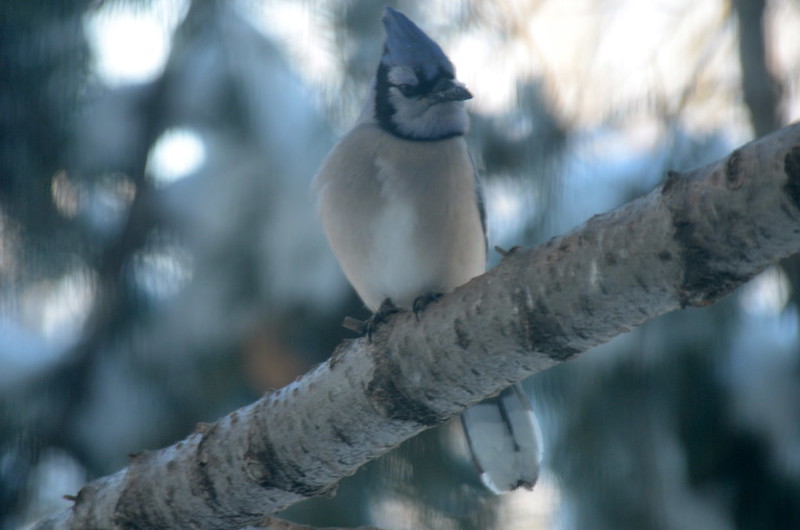

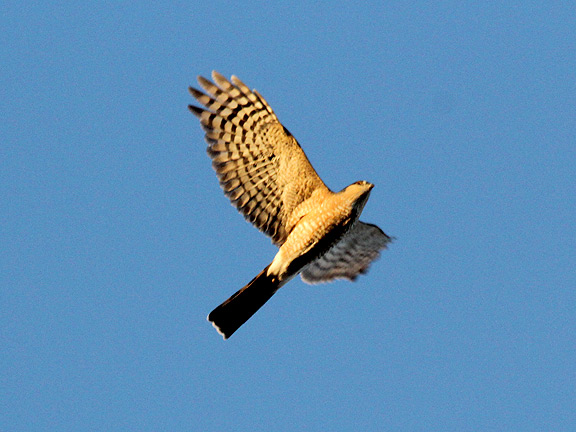
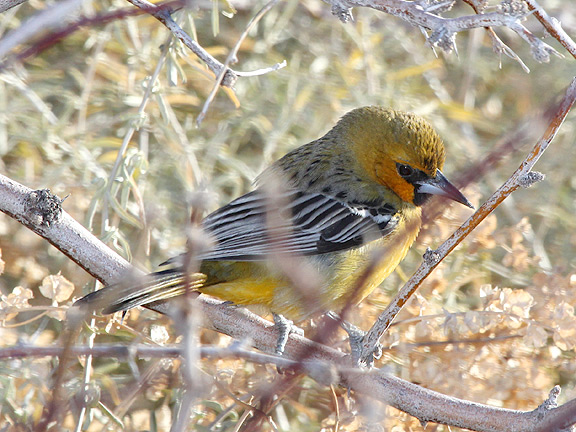
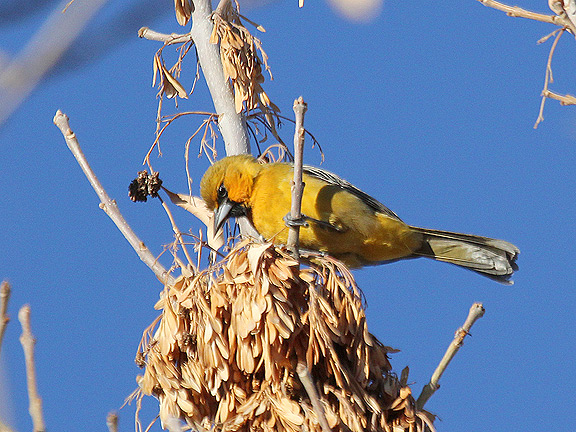
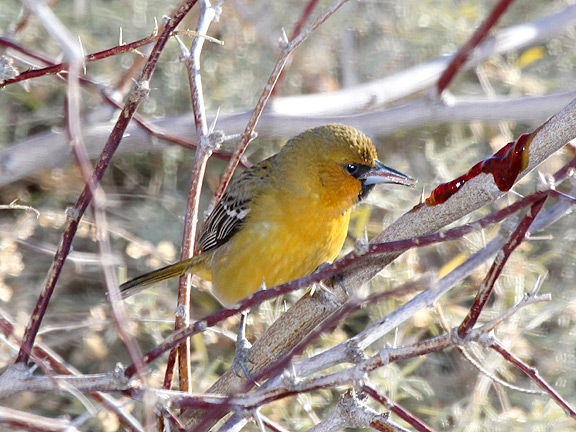

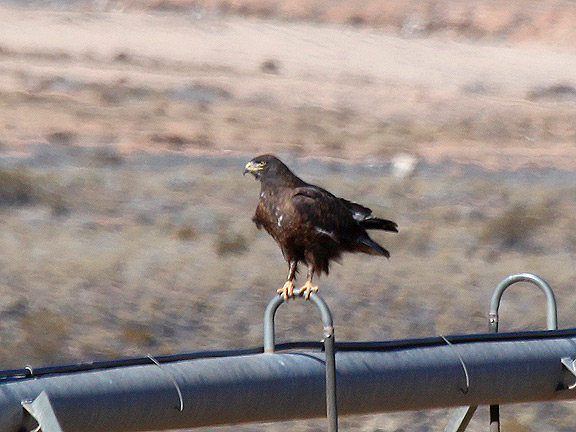


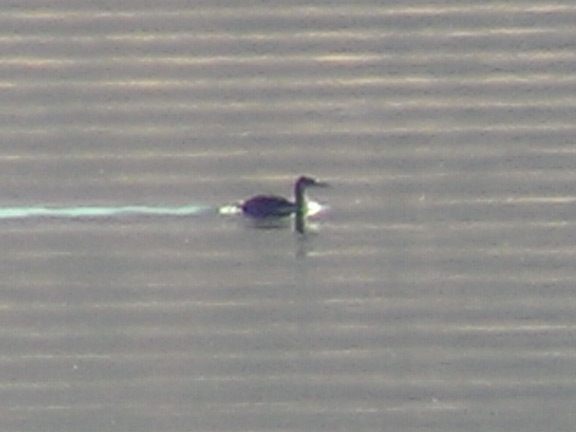
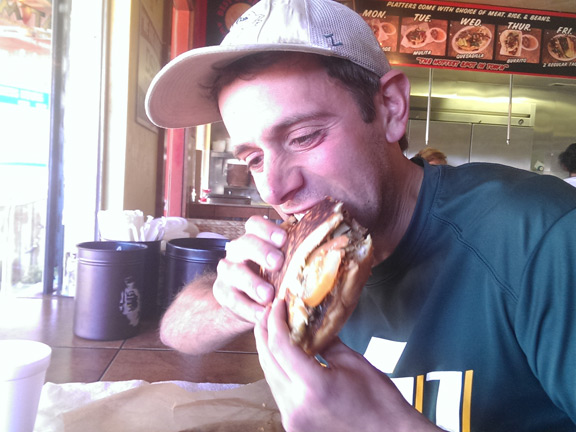


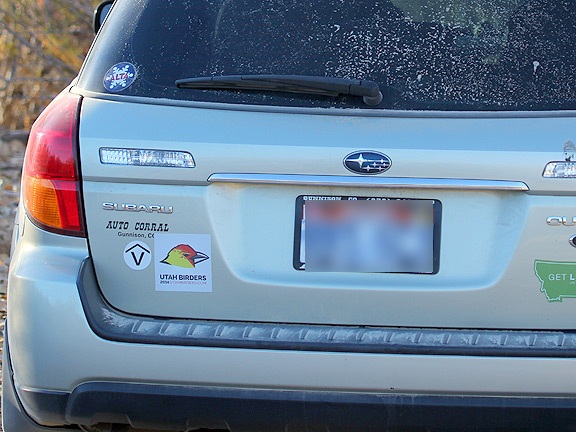
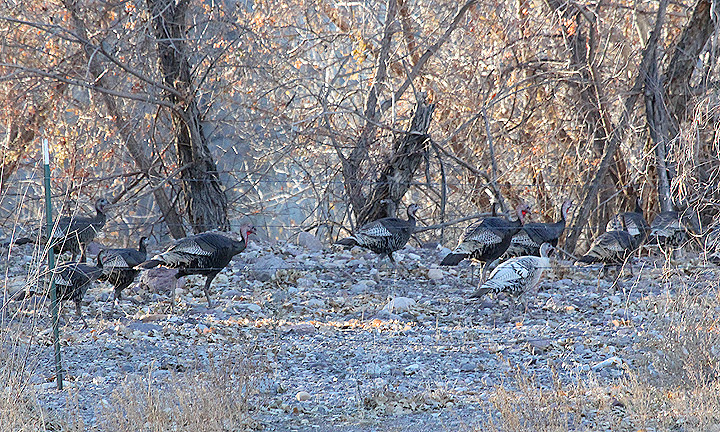
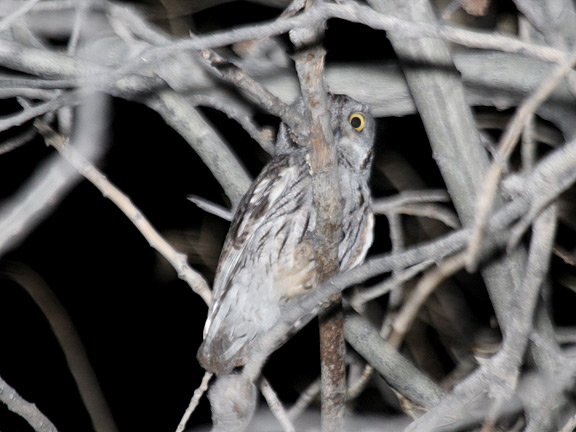

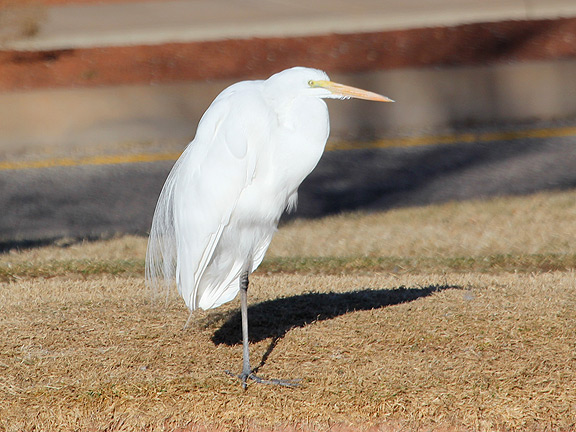
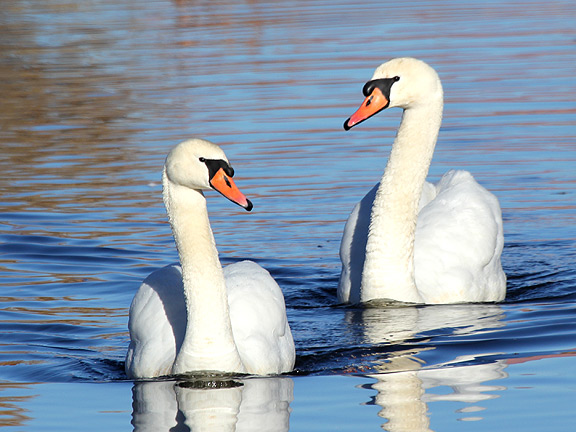
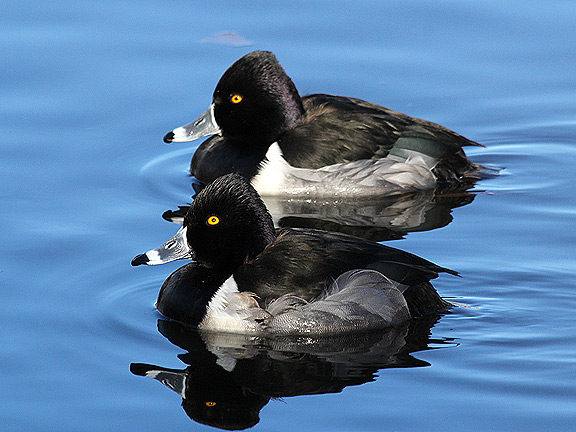
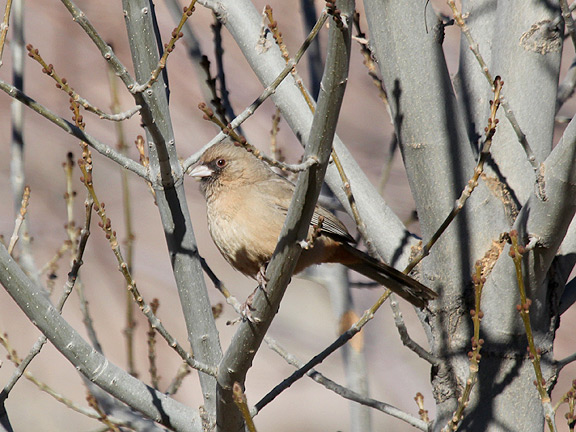
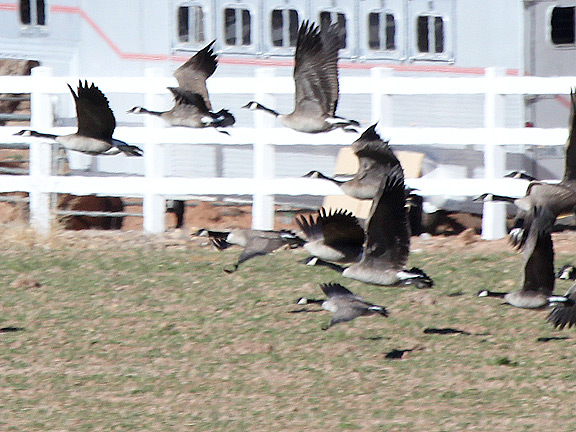









.jpg)


.jpg)
.jpg)
.jpg)
.jpg)
.jpg)



